- Home
- Isaac Hooke
Test of Mettle (A Captain's Crucible Book 2) Page 15
Test of Mettle (A Captain's Crucible Book 2) Read online
Page 15
The other attackers immediately angled their palms toward the platoon positions. A partially exposed Centurion was terminated immediately.
Rade took out two more of the humanoids in the same way.
The final attacker lowered its palm and hastened toward the cylindrical anomalies. As Rade tracked the enemy in his sights, the humanoid scooped up two of the objects. Either those things were extremely light, or the humanoid was extremely strong.
Rade squeezed the trigger, but the humanoid bounded two quick steps forward and then thrusted skyward. In three seconds it was a mere dot in the sky.
Rade was stunned. No one had a jetpack that powerful.
“Alpha-2, track that with the Raptor,” Rade instructed.
“Alpha-2 is gone, sir,” Alpha-3 answered. “I have assumed air support duties.”
Rade hadn’t noticed Alpha-2’s indicator had turned red on his HUD.
“Are you tracking the tango?” Rade asked.
“Trying,” Alpha-3 returned. “The Raptor can’t seem to get a bead. The cloud coverage is making it difficult.”
“Captain Dallas, do you have anything?” Rade sent.
Three seconds later the response came. “We do. The target has already reached the thermosphere. It seems to be headed sunward. It’s moving way too fast for any sort of intercept on our part. We’re letting it go.”
“Roger that,” Rade returned.
ROBERT PUSHED HIMSELF upright. He stared at the body of one of the fallen humanoids nearby.
“My head is killing me,” Aaron said.
Robert hadn’t noticed it in the heat of the moment, but his head was pounding, too. “Radiation poisoning?” A shared headache was usually the first symptom.
“What you’re feeling are the aftereffects of a psychic attack,” Barrick sent over the comm. So the man had survived. He sounded unnervingly calm. “Our brains were apparently incompatible, otherwise an incident similar to the one where I assumed control of the Callaway would have occurred, rather than a mere headache.”
The commander wasn’t going to tell him about the modifications that were supposed to protect against that very thing. The incident would mark the second psychic attack that had penetrated the suits, after the images of war the cigar-shaped objects had forced into his head. He was going to have to have a little talk with Connie when he got back...
“Bravo-3,” Chief Galaal said over the comm. “You’re our corpsman. See if you can help the fallen Raakarr.” He glanced at Robert. “With your permission of course, Commander.”
“Granted,” Robert said. “Barrick, tell your friends to deactivate those shields so we can attend the fallen.”
“No,” Barrick said, emerging from where he had taken cover behind a rock protrusion. “Leave them. They’re dead. And even if they weren’t, the Raakarr wouldn’t want your assistance. It would be a dishonor.”
Bravo-3 had swiveled a new limb into place on its right arm, and the long fingers reminded Robert of the telescoping digits of a surgical Weaver robot. “Shall I proceed, Chief?”
“Stand down,” Chief Galaal told the robot.
Robert approached the body of the nearest humanoid. “Chief, can I get a robot over here?”
Bravo-3 obliged. O’Rielly joined him as well.
“How are you holding up?” Robert asked the science officer.
“I’m alive,” O’Rielly said. “That’s something.”
“It is,” Robert agreed. “Bravo-3, I think these are environmental suits of some kind. I want you to see if you can find a helmet seam. And if you can, tear it off.”
The robot squatted beside the head and began examining it closely.
O’Rielly meanwhile dropped to one knee and held a scanner over the hole in the torso. A blackened cylinder had been carved right through the body.
Bravo-3 pointed its laser at the featureless head. “There is no seam. May I use my laser, Commander?”
“Go ahead,” Robert said. “But the lasers didn’t have any effect before, so what makes you think they’ll do anything now?”
“Just a hunch, Commander,” Bravo-3 responded.
Robert pursed his lips. A combat robot having a hunch? Well, he supposed things like intuition were within the capabilities of their programming. Centurions needed to be able to respond to constantly changing combat situations, after all.
The robot squeezed the trigger. A barely visible plume of smoke rose from the humanoid’s neck region.
“Good hunch,” Robert said.
“I detected a bigger than expected drop in thermal energy from the surface of the suit when it was breached,” the robot explained. “Consistent with the cessation of an energy field of sorts.” The smoke plume slid sideways across the surface as the robot continued to cut. When the laser reached the rightmost edge, the robot stopped cutting and flipped the body, nearly hitting O’Rielly, who was still kneeling beside it.
“Hey!” O’Rielly said, stepping back.
“Sorry sir,” Bravo-3 said. It resumed cutting.
When it completed another crossing of the neck assembly from the back, the Centurion strapped the gun over its shoulder, knelt, and grabbed the head of the alien. It twisted its arms and the head came right off. Or rather, the helmet, because a pale, bald crown presented itself.
“Turn the body over,” Robert said.
Bravo-3 complied, revealing a vaguely human face: there were two eyes, a nose, and a mouth. But with that receding forehead and those prominent brow ridges, the features were more Neanderthal than anything else.
O’Rielly knelt, holding his scanner right up to that face and taking a sample.
“You’re not going to believe this, Commander.” O’Rielly said a moment later. “But I’m looking at the DNA and, well, this is just a preliminary analysis, mind you, but ninety-nine percent of the base pairs are a match to humans.”
“Ninety-nine percent?” Robert said. “How is that possible?”
Behind his faceplate, O’Rielly pursed his lips. “I’m not sure. But I can certainly speculate.”
“Speculate away.”
“We believe the Elder created the Slipstreams when they operated in our galaxy between three and eight hundred thousand years ago. It’s possible they could have interacted with the descendants of humans during that time. Perhaps even captured some.”
“Why?”
“Who knows? The same reason we capture animals for our zoos. Or to serve as pets. Or perhaps they were merely creating some sort of ark to preserve various specimens of Earth from that time, before they left the Milky Way behind for good.”
“So they captured Neanderthals?” Robert asked.
“Maybe,” O’Rielly said. “Or perhaps they captured homo sapiens, and thanks to evolution, we have a human sub-species here that has grown to resemble the Neanderthal.”
Robert didn’t know what to think. “So you believe we’ve stumbled into territory that belongs to the Elder, and they’re using human stock as servants?”
“That was just one theory,” O’Rielly admitted. “Another is: these could be the Elder themselves. Maybe humanity originated from outer space, and we’re the descendants of the Elder. There are so many possible explanations, Commander, I can’t even begin to guess which one is the actual.”
“Commander,” Chief Galaal said.
Robert glanced at the chief, who gestured for him to look behind.
The two surviving black mists had begun to retreat. They dragged the other darknesses along behind them. The small black spheres that served as their HS4 equivalents moved with them.
“We have to go,” Barrick said. The telepath was bounding after the retreating mists.
“Wait?” Robert said. “What’s going on? I thought the Raakarr wanted to investigate this anomaly together.”
“They have seen enough, I believe,” Barrick returned.
“What about Bridgette?” Robert said. “I want her back.”
“I’m sorry, Commander Cray. That’s a matter we’ll ha
ve to negotiate later.”
“Don’t the Raakarr want to collect one of the objects?” O’Rielly asked. “Or a humanoid body?”
“No,” Barrick responded. “Good luck, Commander, in the coming days. Tell your captain to be strong.”
A moment later a message from the captain arrived. “I need the platoon to return to the ship immediately, Commander. An urgent matter has arisen.”
“Roger that,” Robert returned.
He stared at the retreating form of Barrick and the mists a while longer and then sighed.
Bridgette’s rescue will have to wait another day.
He glanced at the cylindrical objects. There were still three left.
“We’re getting off this ugly ball of ice and rock, people,” Robert said over the comm. “Gather up those eggs or whatever the hell they are. And all four humanoid bodies.”
“Assuming we can actually lift them...” O’Rielly said.
A combat robot marched over to the objects and hoisted one into the air. Another robot easily lifted a suited humanoid.
“It appears we can carry them,” the Centurion said with a hint of amusement in its tone.
twenty-three
Jonathan stared at the tactical display. He had reduced the video feed from Commander Cray’s helmet to take up a quarter of the screen in the lower left, and instead watched the red dot representing the humanoid move toward the inner planets until the active sensors could no longer track it.
“We’ve lost it, sir,” Ensign McNamara, the second watch ops officer, said.
Jonathan nodded. They were lucky to track it as long as they had, given how difficult it was to follow something the size of their own spacesuits. It moved on a course that would give a wide berth to the new heat signatures that had been detected from the inner planets moments ago.
“Do we have a match on the six heat signatures, yet?” Jonathan asked.
“They’ve almost moved out of the influence of the gas giant.” McNamara paused. Then he looked up. “The signatures are consistent with five Raakarr dart ships, and one of their capital ships.”
Those ships had moved out from the cover of the third gas giant in the system. They had been waiting there all that time, obviously preparing for some sort of ambush. The dart ship on the other side of the current planet no doubt knew about their appearance, given that they were directly in the line of sight. Jonathan had attempted to contact the so-called allies via the telemetry probes he had in place above the poles, but so far he had received no answer.
Shortly before the appearance of the ships, gamma ray radiation had emanated from the Slipstream behind them, its frequency modulations consistent with Raakarr communications. Though the Callaway couldn’t detect any objects at its current distance from the wormhole, Ensign McNamara theorized that a Raakarr probe had traveled through the Slipstream and was issuing instructions to any allies waiting in the system.
The newcomers wouldn’t have picked up the signals yet, because the gamma rays were still an hour and a half away from reaching them. Their emergence from behind the gas giant at nearly the precise time had to be a coincidence. The Raakarr vessel on the other side of the current planet, however, would have definitely received the gamma rays, thanks to its own telemetry drones in place near the poles.
“The alien telemetry drones are withdrawing,” McNamara announced.
Jonathan rubbed his chin. “That can’t be good. Status on our so-called allies?”
“They’re still in orbit,” the ensign said. “And the alien fighters remain in escort positions.”
“Waiting for their children to come home...” Jonathan mused.
A moment later: “Our Dragonflies have docked,” McNamara said. “As has the Raptor.”
“Status on the captured Dragonfly?” Jonathan asked.
“According to our telemetry drones, it just reached the Raakarr ship.” McNamara paused. “Their vessel appears to be finally breaking orbit, along with the alien fighters.”
“Do we have a flight path?”
McNamara paused. “They’re setting a course sunward. Toward the new arrivals.”
“Try to raise them again,” Jonathan told the second watch comm officer.
“No response,” the officer said.
“Nav, can we intercept them?” Jonathan asked.
“No, Captain,” the second watch nav officer returned. “Not from the current position of the fleet. By the time we get to the other side of the planet they’ll be millions of kilometers away.”
“Which is why they were happy to agree to that orbital arrangement in the first place,” Jonathan said, feeling his frustration rising.
“I’m detecting gamma ray bursts directed from the fleeing ship to the newcomers,” Ensign McNamara said. “Those rays will reach them in approximately two hours.”
Jonathan nodded. “Communicating their response to the receipt of new orders, no doubt. It seems obvious to me that our alien alliance of convenience is over.”
Robert joined him on the bridge shortly thereafter and Jonathan updated him on the tactical situation. There was no need to debrief Robert on his mission in turn, as the captain had watched the whole thing unfold live. There was only one question he had for Robert regarding the mission, and he extended his noise canceler around his first officer to ask it:
“You froze down there at one point, Commander. When you were first looking at those anomalies. What happened?”
Robert hesitated, then said: “Telepathy.”
Jonathan felt one of his eyebrows rise. “Telepathy?”
“Yes,” the commander said. “The things tried to communicate with me, I think. They transmitted apocalyptic scenes directly to my mind. I think they’re alive.”
“You called them ‘eggs’ down there at one point,” Jonathan said. “Still, a machine can transmit psychic energy, too.” He tapped his lips. “Telepathic images... so that would be the second time the psychic shielding failed. Assuming Barrick was right about a psychic blast causing the headaches.”
“Yes,” Robert said. “Though the shielding did seem to work against Barrick. As far as I know, anyway. But who knows, maybe he’s controlling my mind at this very moment and none of this is real.” Robert laughed nervously.
“The newcomers have broken away from the gas giant entirely,” Ensign McNamara said. “I’ve got an update on their course vector. They’re definitely headed toward the greenhouse planet. Or, more likely, us.”
The captain dismissed the noise canceler and asked: “What’s the ETA?”
“They’re two days out.”
Jonathan instructed the second watch tactical officer to keep the fleet on the far side of the planet, away from the incoming ships, with the telemetry drones in place above the poles to provide surveillance.
Connie tapped in a few minutes later. “We’ve transferred the dead Raakarr to a smaller receptacle, and placed the new specimens in the specially-designed containment area instead. I’ve adjusted the atmosphere and temperature to match the planetary surface. The anomalies are continuing to draw heat energy from the environment, and are issuing gravimetric distortions. We’re going to have to continually reinforce the container if we want it to hold them, just like we have to do with the Raakarr body.”
“Thanks for the update,” Jonathan replied. “Do whatever you can to find out what those objects are.” He refused to call them “eggs.”
“Will do.”
When she tapped out, he glanced at his first officer. “What do you think, Commander? Should we return those objects to the surface? Before that humanoid comes back with some pissed off friends?”
Robert rubbed his earlobe. “I think we need to find out as much about them as we can, while we can. And we can’t do that unless the objects are in our possession.”
“Agreed.”
“And you never know,” Robert said. “Maybe we can use them as bargaining chips at some point.”
“Maybe,” Jonathan agreed. He turned to
ward the second watch comm officer. “Continue hailing attempts with the Raakarr vessel.”
Miko wasn’t on the current watch, so Jonathan tapped into the tactical officer with his aReal.
“Miko, are you aware of the current situation?” Jonathan sent.
“I’ve been following along, yes, Captain,” Miko returned.
“Good. I want you to come up with some strategies for the fleet.”
“Aye sir,” Miko replied.
Six alien dart ships and one capital ship against five human warships and two civilian ships. Not exactly an even match. Miko certainly had his work cut out for him.
Two hours later:
“I’m getting a response back from the initial active scans of the newcomers,” McNamara said. “This is interesting. According to the readings, their hulls aren’t made of the usual steel composite we’ve seen in Raakarr ships. Instead, they’re composed of an iron ore that’s almost an exact match to elements found in one of the moons orbiting the giant. I think those ships were built recently, with construction beginning shortly after the first alien ship, T3, arrived.”
Jonathan glanced at Robert, who nodded.
“It’s possible T3 was equipped with a slightly more advanced version of our 3D printers,” the commander said. “Able to print the components necessary for reactors and power systems from only a few raw materials.”
“Then why not reproduce the usual steel composites in their hulls exactly?” Jonathan said.
“Maybe the energy expenditure didn’t justify perfection,” Robert argued.
“If they truly have that ability,” Jonathan said. “Then they lied about not having exploratory shuttles. They could have readily 3D-printed their own. And they probably did just that. But the Raakarr still wanted us to go down to the surface with them. Why?”
“I don’t know,” Robert said. “That’s the part I don’t get.”
“Unless they knew we would be ambushed by a third actor,” Jonathan said.
“But if they knew, how would the ambush help them? They suffered three casualties.”
Jonathan sighed. “We’re dealing with alien motivations and thinking, here. Never an easy thing to figure out.”

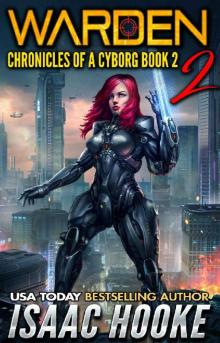 Warden 2
Warden 2 Devastator
Devastator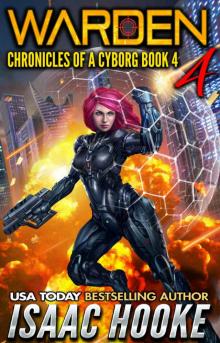 Warden 4
Warden 4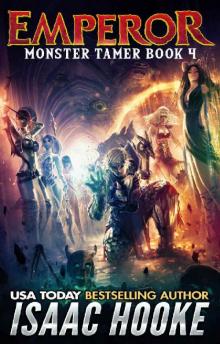 Emperor
Emperor Mech
Mech Conqueror
Conqueror Fighter
Fighter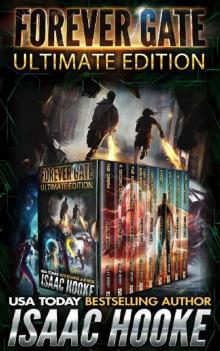 The Forever Gate Ultimate Edition
The Forever Gate Ultimate Edition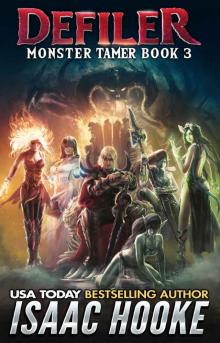 Defiler
Defiler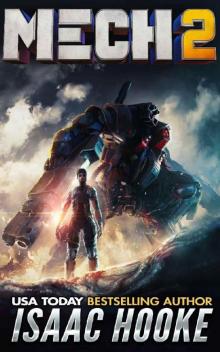 Mech 2
Mech 2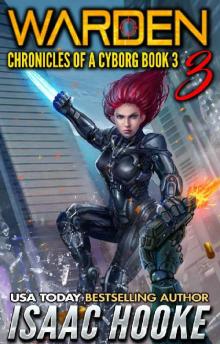 Warden 3
Warden 3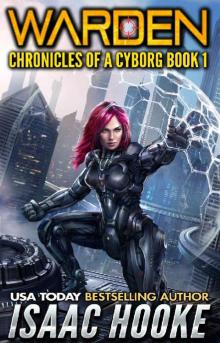 Warden 1
Warden 1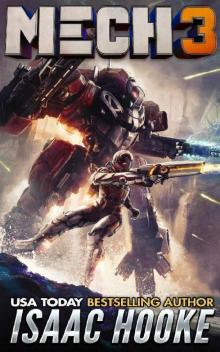 Mech 3
Mech 3 Forerunner
Forerunner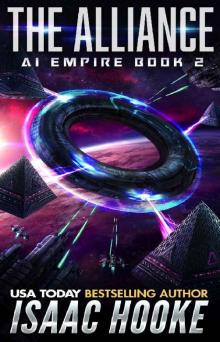 The Alliance (AI Empire Book 2)
The Alliance (AI Empire Book 2)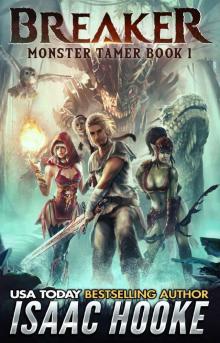 Breaker (Monster Tamer Book 1)
Breaker (Monster Tamer Book 1) Bender of Worlds
Bender of Worlds The Pendulum Swings (The Forever Gate Book 8)
The Pendulum Swings (The Forever Gate Book 8)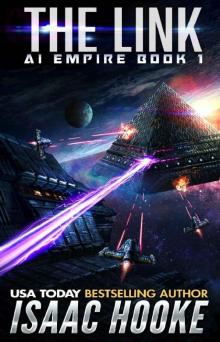 The Link
The Link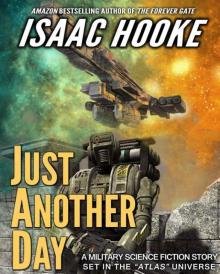 Just Another Day
Just Another Day Star Warrior
Star Warrior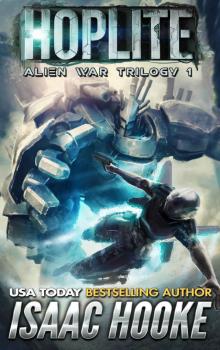 Alien War Trilogy 1: Hoplite
Alien War Trilogy 1: Hoplite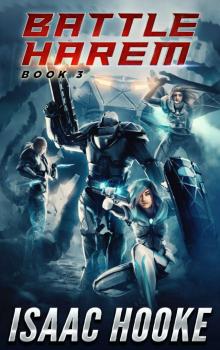 Battle Harem 3
Battle Harem 3 The Ethan Galaal Series: Books 1 - 3
The Ethan Galaal Series: Books 1 - 3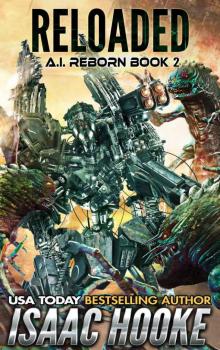 Reloaded
Reloaded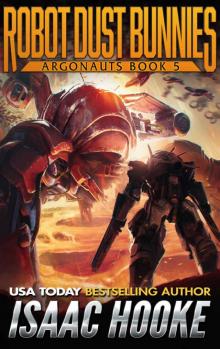 Robot Dust Bunnies (Argonauts Book 5)
Robot Dust Bunnies (Argonauts Book 5) Battle Harem
Battle Harem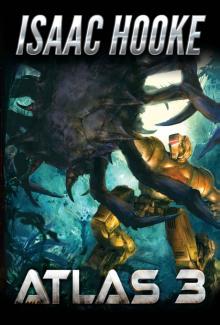 ATLAS 3 (ATLAS Series Book 3)
ATLAS 3 (ATLAS Series Book 3) Argonauts 2: You Are Prey
Argonauts 2: You Are Prey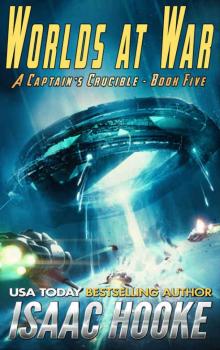 Worlds at War (A Captain's Crucible Book 5)
Worlds at War (A Captain's Crucible Book 5)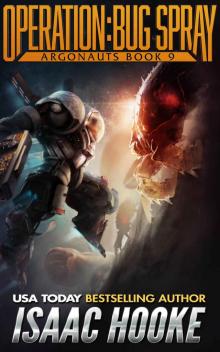 Operation: Bug Spray (Argonauts Book 9)
Operation: Bug Spray (Argonauts Book 9)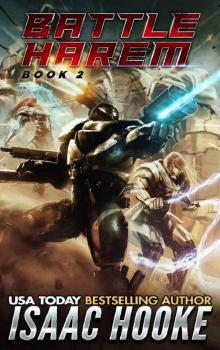 Battle Harem 2
Battle Harem 2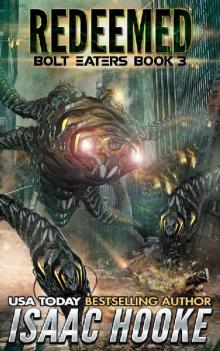 Redeemed (Bolt Eaters Trilogy Book 3)
Redeemed (Bolt Eaters Trilogy Book 3)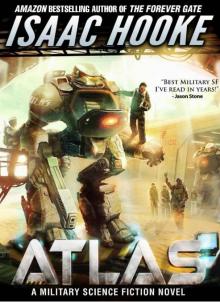 Atlas
Atlas Argonauts 1: Bug Hunt
Argonauts 1: Bug Hunt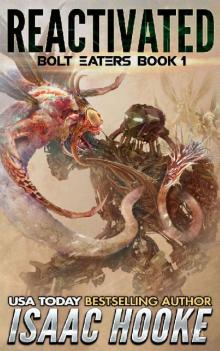 Reactivated (Bolt Eaters Trilogy Book 1)
Reactivated (Bolt Eaters Trilogy Book 1)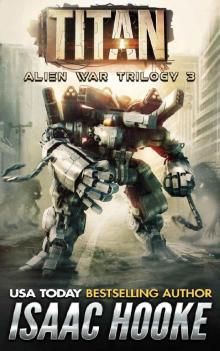 Alien War Trilogy 3: Titan
Alien War Trilogy 3: Titan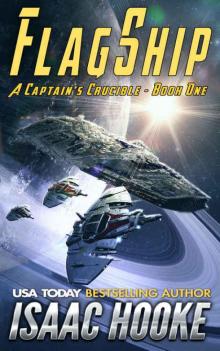 Flagship (A Captain's Crucible #1)
Flagship (A Captain's Crucible #1)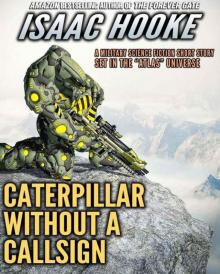 Caterpillar Without A Callsign
Caterpillar Without A Callsign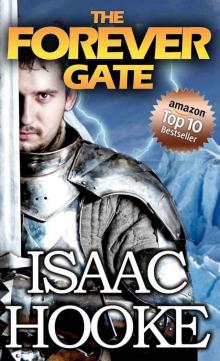 The Forever Gate
The Forever Gate He Who Crosses Death (Star Warrior Quadrilogy Book 3)
He Who Crosses Death (Star Warrior Quadrilogy Book 3)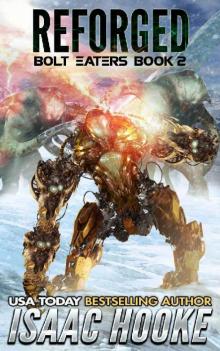 Reforged (Bolt Eaters Trilogy Book 2)
Reforged (Bolt Eaters Trilogy Book 2)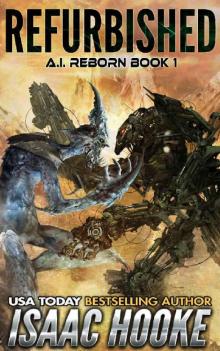 Refurbished
Refurbished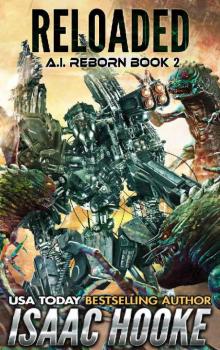 Reloaded (AI Reborn Trilogy Book 2)
Reloaded (AI Reborn Trilogy Book 2) He Who Crosses Death
He Who Crosses Death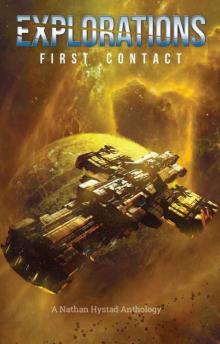 Explorations: First Contact
Explorations: First Contact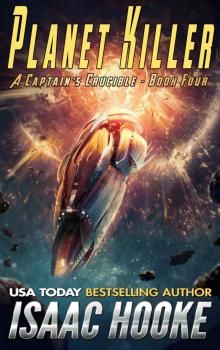 Planet Killer (A Captain's Crucible Book 4)
Planet Killer (A Captain's Crucible Book 4)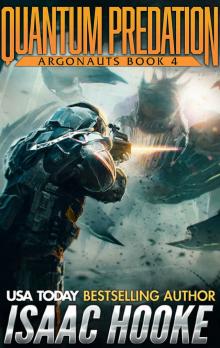 Quantum Predation (Argonauts Book 4)
Quantum Predation (Argonauts Book 4) Clandestine-IsaacHooke-FreeFollowup
Clandestine-IsaacHooke-FreeFollowup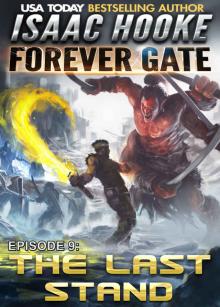 The Last Stand (The Forever Gate Book 9)
The Last Stand (The Forever Gate Book 9)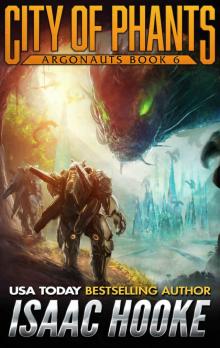 City of Phants (Argonauts Book 6)
City of Phants (Argonauts Book 6) Test of Mettle (A Captain's Crucible Book 2)
Test of Mettle (A Captain's Crucible Book 2)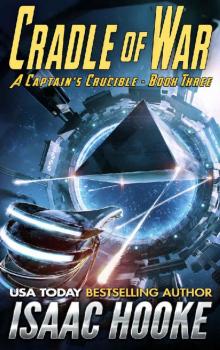 Cradle of War (A Captain's Crucible Book 3)
Cradle of War (A Captain's Crucible Book 3)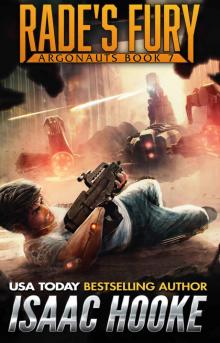 Rade's Fury (Argonauts Book 7)
Rade's Fury (Argonauts Book 7)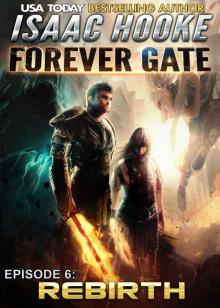 Rebirth (The Forever Gate Book 6)
Rebirth (The Forever Gate Book 6) The Forever Gate Compendium Edition
The Forever Gate Compendium Edition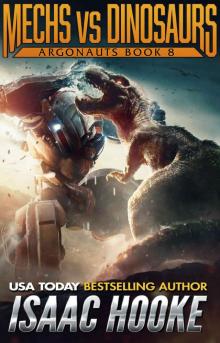 Mechs vs. Dinosaurs (Argonauts Book 8)
Mechs vs. Dinosaurs (Argonauts Book 8)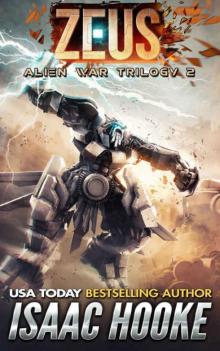 Alien War Trilogy 2: Zeus
Alien War Trilogy 2: Zeus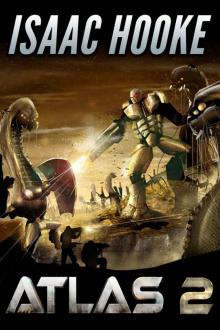 ATLAS 2 (ATLAS Series Book 2)
ATLAS 2 (ATLAS Series Book 2) Operation_Bug Spray
Operation_Bug Spray